READY TO GET STARTED?
REQUEST A FREE ESTIMATE
Fill out the form below or call (888) 466-7849 for a free, no-obligation estimate.
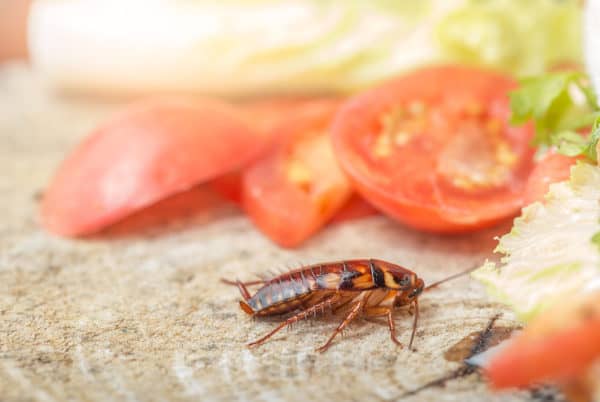
There are thousands of species of cockroaches in the world but only a handful are found in the United States. The most common species found in the US include the German cockroach, the American cockroach, the brown-banded cockroach, and the Oriental cockroach. While there are significant differences between these four species, there are some common features that are shared between ALL species of cockroaches. All roaches have flattened, oval-shaped bodies with antennae on their heads. They all move surprisingly fast and they all present a health risk for households. Roaches are known to spread more than 30 types of bacteria and even parasitic worms. One can find all of these species of cockroaches in the house. However, each species has its own characteristics and can be found in different parts of the home – making treatment methods vary from type to type. Let’s take a look at the different types of cockroaches and some ways to prevent them.
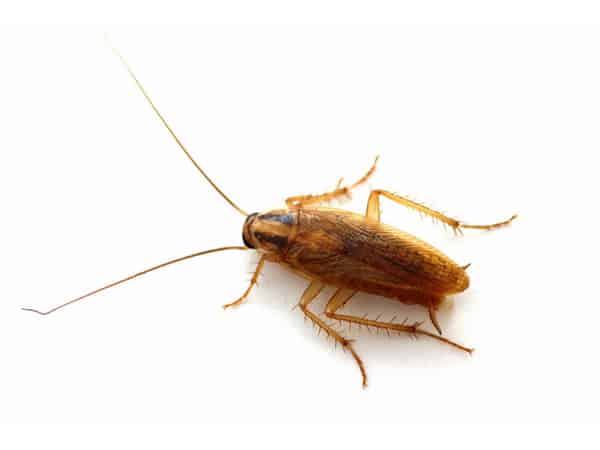
The German cockroach, also known as Blattella germanica, is a smaller species of cockroach, usually only growing to about 5/8″ in length. They are usually pale brown or caramel colored with two dark brown stripes behind their heads. They have wings but do not fly. German cockroaches are found across the United States and prefer warm, moisture-rich habitats. They are often found near dishwashers, sinks, and stoves and are mostly found in kitchens and bathrooms. German cockroaches can live up to 12 months and produce more eggs than any other cockroach species. They eat a wide variety of things but prefer meat, grease, and starchy foods. They are notoriously responsible for outbreaks of illness and triggering allergic reactions in humans. Their small size allows them better hiding capabilities making them harder to get rid of.
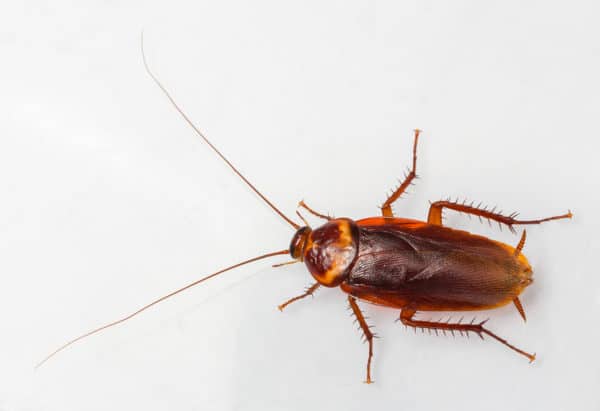
The American cockroach, also known as Periplaneta americana, is one of the largest cockroaches found in homes. American cockroaches grow up to 1-1/2″ in length. They are reddish-brown or brown in color and have light yellow bands around the shield behind their heads. American cockroaches have wings and can fly short distances. They are found throughout the United States and are often found in warm, dark areas like basements, crawlspaces, bathtubs, drains, and sewers. They are also common in households where food is stored. They will eat everything from plant material to garbage and contaminate any surfaces they walk across. American cockroaches can live up to 2 years. They are active when the temperature is 70 degrees or higher but have also adapted to survive at much lower temperatures with the right conditions.
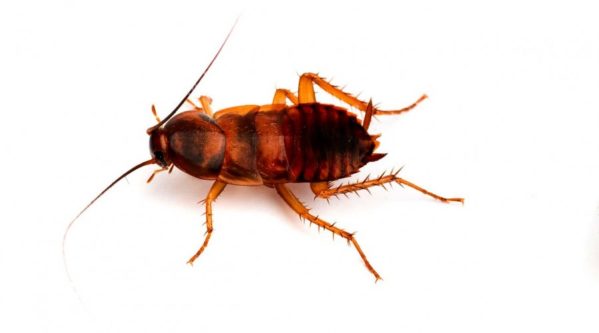
The brown-banded cockroach, also known as Supella longipalpa, is a smaller species of cockroach found throughout the United States. Brown-banded cockroaches are distinguished by 2 light yellow to brown bands across their bodies. Males have larger, dark brown wings that lighten in color as they extend to the tips. Females have smaller, reddish-brown to dark brown wings. Even though they both have wings, only males can fly. Brown-banded cockroaches like warm, dry environments that are higher than other species. They are often found in upper cabinets, behind pictures hanging on the walls, or in the hollow parts of furniture. In fact, they will often hide their egg casings in or under furniture. They will also gather near larger appliances like refrigerators and TVs because of the heat they give off. These cockroaches are often found in offices, apartments, kitchens, and hospitals. Brown-banded cockroaches prefer starchy foods like glue from envelopes and stamps and also paper products. They can live from 3 months up to 1 year and will jump when they have been disturbed.
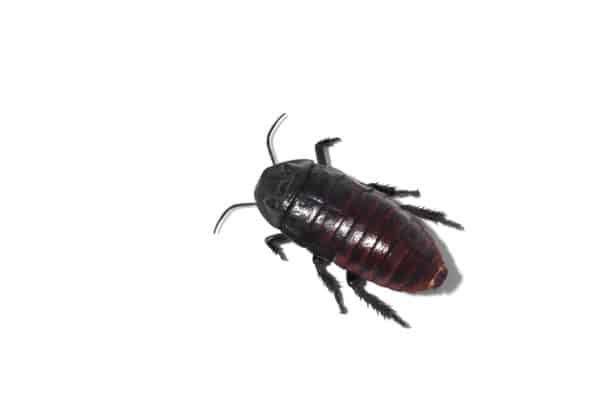
The Oriental cockroach, also known as Blatta orientalis, “water bugs,” and “black beetles,” has a glossy appearance that is dark brown or black in color. Oriental cockroaches can grow up to 1-1/4″ in length. These cockroaches cannot fly and are not as fast as other species. They prefer cool, dark, damp environments and are often found in basements, sewers, drains, and near woodpiles. They commonly enter homes through drains in search of food. Unfortunately they cannot climb smooth vertical surfaces and are often found stuck inside sinks and tubs. They primarily feed on decaying organic matter. Oriental cockroaches have a 6 month life span and give off a strong smell. They are considered one of the dirtiest species of cockroaches.
Seeing one or two cockroaches in the house usually means there are several more hidden out of sight. They are much more difficult to get rid of once a roach infestation is established. There are some steps you can take to help prevent roaches from taking over:
If you suspect you have a roach problem, contact a licensed pest control company. Professional pest control technicians can provide expert advice and thoroughly assess your home to help identify not only the type of cockroaches you have but also the most up-to-date treatment options and prevention techniques.
Mosquito Season: When Will It End?
How Much Damage Can Termites Really Cause?
Helpful Tips to Keep Wildlife our of Your Home

Cockroaches carry many diseases and can cause several health issues in humans including food poisoning and can trigger allergies and asthma attacks. So where do roaches come from?
If you have a roach infestation in your home, there could be several reasons why. Roaches may have already been in your home before you moved in. Roaches are also very good hitchhikers and are easily transported from one place to another. They can get into your home in grocery bags, cardboard boxes, luggage, furniture, or appliances. They can also get in through the plumbing, sewers or drains. They can travel over from your neighbor’s home into yours, too.
But what attracts cockroaches if your house is clean? Like most pests, roaches are looking for three main things: food, shelter, and water. They are year-round pests and are incredibly resilient – making them difficult to control. Different species of cockroaches are attracted to and thrive in different environments.
German cockroaches are the most common indoor roaches. They prefer dark, warm, humid places near food and water, preferably in a temperature range of 70 to 75 degrees Fahrenheit. You can usually find German roaches in kitchens, in cracks and crevices of cabinets, near sinks or appliances, and in food prep and storage areas. They can also be found in bathrooms when the roach infestation is heavy. Early detection and control of german roaches is extremely important as they can be very hard to get rid of.
Oriental roaches prefer dark, damp, cool habitats. Outdoors you can usually find them where there is an abundant supply of organic matter like mulch or wood chips, under patio bricks, or between the soil and your foundation. Once inside your home, they are often found in drains, basements, and crawlspaces. They can also be found near leaky water pipes, under sinks, refrigerators, floors, and washing machines.
Brown-banded roaches prefer warmer, drier places (greater than 80 degrees Fahrenheit). They live in higher areas, usually at eye level or above, like your cabinets, pantries, closet shelves, behind pictures, in books, or under kitchen tables and chairs. They can also be found in warm areas such as near clocks, timers, TVs, and refrigerator motors.
American cockroaches are found in homes, restaurants, bakeries, and grocery stores – anywhere food is prepped and stored. They prefer warm, moist environments and can often be found in boiler rooms, basements, around pipes and water heaters, and in drains and sewers.
Here are some tips to prevent roaches from infesting your home:
Clean up spilled crumbs and food immediately. Don’t leave dirty dishes out overnight. Throw away any food that is left out on the counter. Wipe down the surface of all food prep areas every night. Clean under your appliances and wipe down any that are on your counter. Make sure to clean underneath the refrigerator and stove, also. Rinse out milk jugs, juice cartons, and cans before throwing them away. Empty your garbage can every night and use garbage cans with tight fitting lids. Check kitchen drawers for any food debris and crumbs. Store food in airtight containers. Store pet food in airtight containers and elevate them off the floor. Don’t leave your pet’s food and water bowls out overnight. Roaches communicate through chemical pheromones they secrete as they move. Cardboard and paper are excellent absorbers of these pheromones. Replace cardboard boxes with plastic containers if possible. Don’t bring any cardboard boxes used for storage inside the home. Don’t store piles of newspapers – recycle them instead.
Carefully inspect the interior and exterior of your home. Seal any gaps or crevices you find, even the smallest ones. Roaches can squeeze through the tiniest openings to get into your home. Use weatherstripping around all entryways including doors and windows. Declutter as much as possible. Roaches can also get into your home through drainpipes. Use stoppers or metal baskets on all the drains in your sink and shower and make sure to keep your drains clean. Roaches will also hitch rides on firewood. Make sure to only bring in enough wood for one fire and don’t store any extra wood inside.
Most species of roaches prefer moist areas so eliminating water is key to helping prevent them. Remove any standing water in and around your home. Check for leaks and repair them promptly. Use caulk to seal gaps around your sink and tubs to keep water out of the walls. Don’t let water stand for long periods of time in plants and flowerbeds. Don’t leave your pet’s water bowls out overnight. Hang any wet towels and mats up to dry after using them. Keep your kitchen sponges dry and don’t store them on the counter.
Roaches can be incredibly difficult to control and eliminate. If you have a roach problem, contact a professional pest control company or schedule a free pest inspection now. A pest control technician can thoroughly inspect your home to identify not only where and how roaches are getting into your home, but also the specific type of roaches to better treat and eliminate them.
Why Are There so Many Millipedes in my House?
Is Your Hotel on the Bed Bug Registry?
Lawn Survival Tips for the Summer Heat
What Attracts Cockroaches to a Clean House?
Is Termite Protection Worth It?
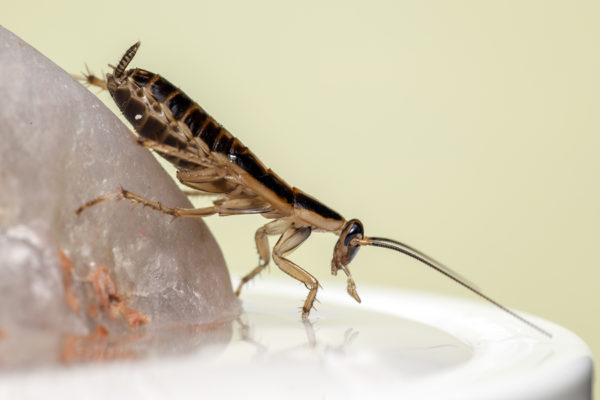
Any type of pest infestation is cause for a headache and panic, but no infestation is more difficult and stress-inducing than that of a German cockroach. They amass inside homes in large numbers, making them difficult to contain.
There are plenty of questions homeowners have when dealing with a possible invasion: “How do I know if this is a German roach?”; “Why are they in my home?”; and “What can I do to get rid of them?” Let’s take a moment to answer these questions.
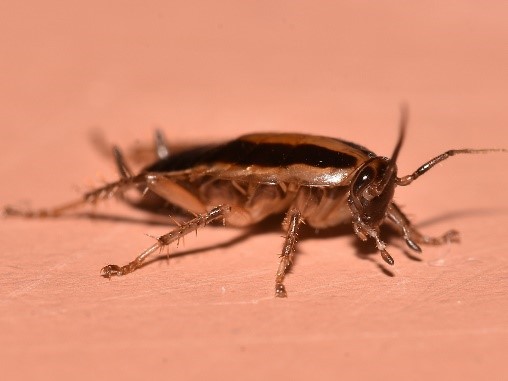
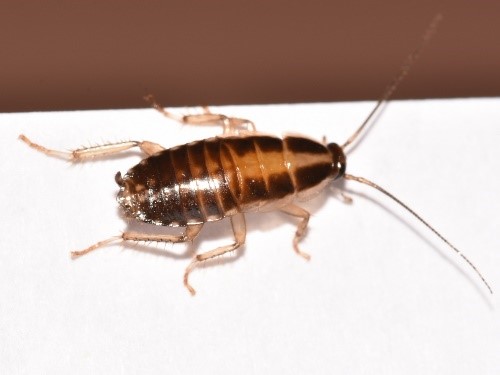
Adult German Cockroach Nymph German Cockroach
German cockroaches are among the smaller of the cockroach species, measuring anywhere between ½” – 5/8” in length. Oval-shaped and light brownish, almost tan, German cockroaches have two identifying, almost parallel, dark lines that run down their back just behind their head.
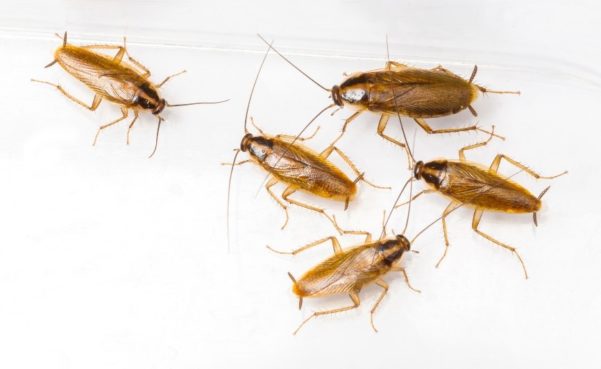
German cockroaches are very good at hitchhiking and can make their way in to your home by way of grocery bags and cardboard boxes. They prefer dark, warm places where they can hide. While they can be found anywhere in a home, they are primarily found in bathrooms and kitchens.
Practicing good sanitation is the best prevention to a German roach infestation. Vacuuming often and looking throughout the home for possible entry points to seal are great preventative measures. A properly ventilated crawl space will help prevent the moisture that German roaches seek out. As always, if you suspect you have a German roach problem, contact your licensed pest professional to set up an inspection as soon as possible.
It’s no secret that cockroaches are thought to be one of the most disgusting pests. They are known to carry up to 33 different kinds of bacteria that they spread around and contaminate food and surfaces. Roaches are also responsible for causing allergies and triggering asthma attacks, especially in children. Studies say that up to 5 million children are sensitive to cockroaches.
Behind the undesirable cockroach are many unique features. Here are 10 Fascinating Facts about Cockroaches:
For more fascinating facts on cockroaches visit our sources at NPMA and Hubpages.
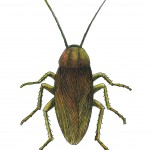 The German cockroach is the most common cockroach found in structures. They can invade your home at anytime of the year and once they do, they can increase in population very quickly. A cockroach can produce 30-48 eggs at a time and those eggs can go on to reproduce in 30-45 days.
The German cockroach is the most common cockroach found in structures. They can invade your home at anytime of the year and once they do, they can increase in population very quickly. A cockroach can produce 30-48 eggs at a time and those eggs can go on to reproduce in 30-45 days.
At first, German cockroaches will find food, water, and warmth in the home which is usually found in the kitchen and bathroom. But once an infestation occurs they can be found anywhere in the structure and can be difficult to get under control.
Cockroaches can bring about many health and safety concerns. When they invade your home they leave fecal matter and other debris on food and food preparation surfaces. Roaches are also known to cause allergies in children. The National Institute of Environmental Health Sciences reports “one-in-five children in the United States have severe sensitivities to cockroach allergens, which increase the severity of asthma symptoms.”
If you have a roach infestation call a professional pest control company immediately. The quicker you can get the infestation under control, the better for the health of your home and your peace of mind. Call Northwest Exterminating to get rid of roaches in your home or business.